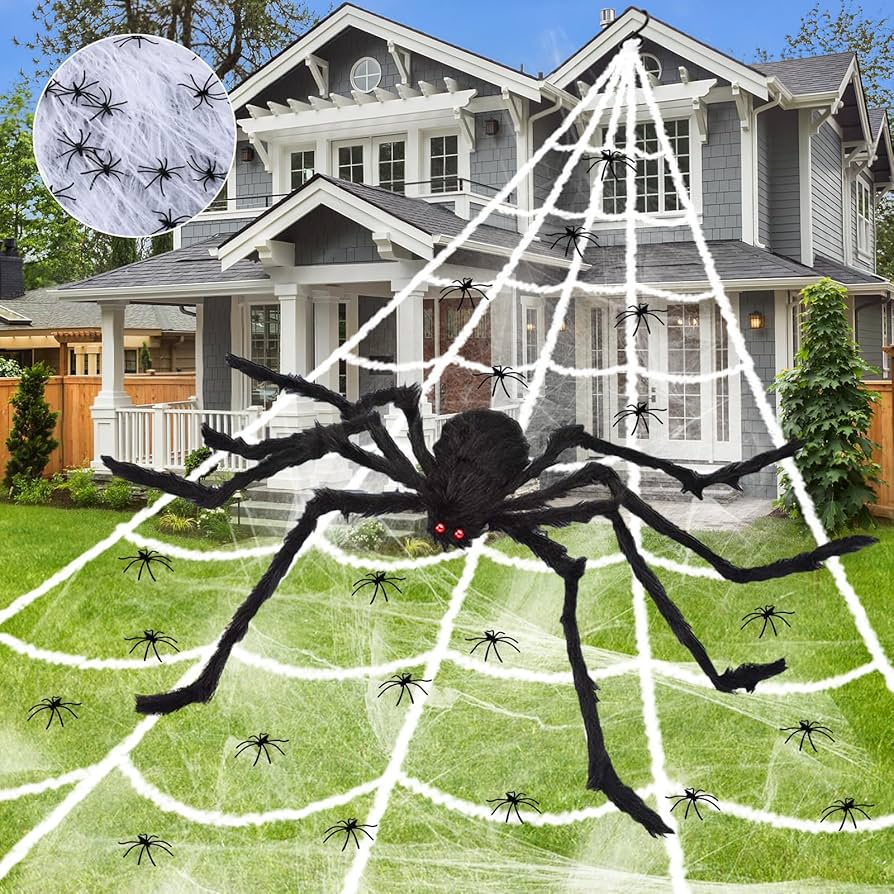
Why You Should Reconsider Using Fake Cobwebs for Halloween Decor
As Halloween approaches, the excitement to decorate our homes with spooky elements grows. From DIY haunted houses to festive wreaths, the options are endless. However, there’s one traditional decoration that might not be as harmless as it seems: fake cobwebs.
Fake spider decoration
Many of us are familiar with the classic fake cobwebs that we drape over bushes and adorn with plastic spiders. While they add a creepy touch to our outdoor spaces, the reality is far from festive. These artificial webs can pose a serious threat to wildlife, including birds, small animals, and insects that get entangled in them.
According to the Ojai Raptor Center, a screech owl was found wrapped in these webs, highlighting the dangers these decorations can pose to our ecosystem. As fall migration season approaches, the risk of trapping songbirds in these sticky traps increases, leading to potentially tragic outcomes.
The environmental impact of these decorations goes beyond trapping wildlife. The dense artificial fibers used in fake cobwebs can persist in the environment, contributing to the pollution of birds’ nests and posing a threat to various species.
If you thought that using fake cobwebs indoors was a safer alternative, think again. The Ojai Raptor Center warns that these decorations are known to cause intestinal issues in domestic cats if ingested, emphasizing the need to reconsider their use in our homes.
Instead of relying on traditional decorations that harm wildlife and pets, there are numerous creative alternatives to make your Halloween decor stand out. Let’s explore eco-friendly and animal-safe options to create a spooky ambiance without endangering our environment.
Embracing Eco-Friendly Halloween Decor
When it comes to Halloween decorations, there are plenty of ways to get into the spooky spirit without harming nature. From natural elements to upcycled materials, the possibilities are endless.
Screech owl siblings
One eco-friendly alternative to fake cobwebs is using biodegradable materials like cotton or wool to create a similar effect without the environmental repercussions. These materials break down naturally, reducing the risk to wildlife and the ecosystem.
Additionally, incorporating elements from nature such as fallen leaves, pine cones, and branches can add a rustic and authentic touch to your Halloween decor. Not only are these materials sustainable, but they also bring a sense of seasonal charm to your home.
For those looking to add a touch of whimsy to their decorations, consider crafting DIY projects using recycled materials. Upcycling old jars, bottles, and fabric scraps can result in unique and environmentally friendly decor pieces that showcase your creativity.
By embracing eco-friendly Halloween decor, we can celebrate the holiday while respecting the environment and protecting wildlife from unnecessary harm.
Conclusion
As we prepare to celebrate Halloween and transform our homes into spooky retreats, let’s remember the impact our decorations can have on the world around us. By choosing eco-friendly alternatives and avoiding harmful decorations like fake cobwebs, we can create a festive atmosphere that is both enchanting and sustainable.
Let’s make this Halloween a time to cherish nature, protect wildlife, and showcase our creativity in ways that benefit the planet. Together, we can enjoy the spirit of the season while making a positive difference in our communities and beyond.















